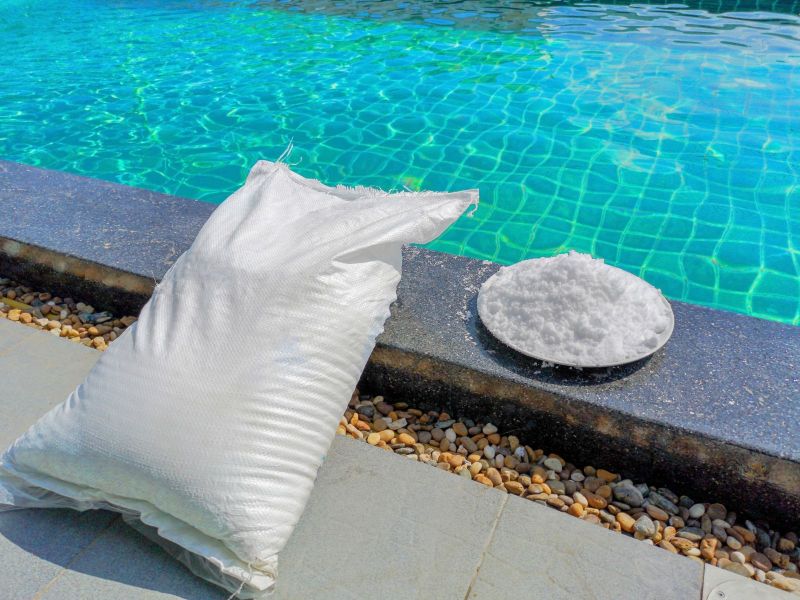Many homeowners love a saltwater swimming pool because as pools go, there is a whole lot less maintenance.
The reason, of course, is that through a chemical process called electrolysis, saltwater pools make their own chlorine.
Other advantages of a saltwater pool are that there is no chlorine smell, much less skincare itchiness, fewer problems with irritated eyes and lungs, and chemical burns, again from chlorine, are almost unheard of.
And since you use far fewer chemicals to maintain your pool's health, a saltwater pool is almost maintenance-free.
Realize though, that even saltwater pools do require some maintenance, and here are a few things to keep in mind.
With a pool, there are daily, weekly and monthly tasks.
Your pool supplier should have told you when you bought the pool the expected things to do to maintain your pool. But if you happen to have bought the house from a previous owner, or maybe inherited the home, here are the expected tasks to keep in mind.
Daily tasks
No, you aren't chained to your pool 24/7 but plan on spending 15 minutes a day helping keep your pool clean by
- Cleaning the skimmer and emptying the pump basket.
- Make a quick scan of your pool and skim off any scum or debris.
As we've said, the total time involved in this little daily activity should amount to less than an hour or so a week, but it will make all the difference.
And if you are lucky enough to have a teenage son or daughter, this is a great task to shift to their responsibility. Just don't ask anyone younger than around 13 to do it for fear of unsupervised pool accidents.
Weekly tasks
Your job here is to maintain the amount of free chlorine in your pool as well as maintain the proper ph level in your pool.
You will have a chlorine generator which basically has two parts, a cell that actually creates salt into chlorine, and an electrically controlled control board that allows you to regulate the amount of chlorine produced.
Normally, you should expect to have between 1 and 3 parts per million of chlorine in your pool, and by adjusting the control panel you can maintain your saltwater pool at that level.
In addition, the ph of your pool needs to be maintained, typically at between 7.2 and 7.6.
Simple ph test strips are used to test the ph level of your pool. Some peop[e go the extra mile and buy a ph meter for their pool, which are much more accurate. But even simple ph testing strips will fill the bill.
If the ph level of your pool is below the minimum recommendations, you can use baking soda to raise it, and if it's too high, then most people use sodium carbonate or muriatic acid.
Typically, you would add around 1.5 pounds of baking soda for every 10,000 gallons of saltwater to raise your pool's alkalinity by 10 parts per million. So if your pool's test strips read 7 ph, you might want to add 3 pounds of baking soda.
At the other end of the scale, if the ph is too high, then around 25.6 ounces of muriatic acid will lower the same 10,000 gallons by .10 parts per million.
Be sure to have plenty of baking soda and muriatic acid in storage if you own a saltwater pool.
Monthly tasks
Your monthly tasks will revolve around checking your pool's salinity, the alkalinity, adding stabilizer and calcium.
Most pool supply places carry all the necessary chemicals to do this, and it's best to consult them on the best products to do the job.
Also, every three months, check the salt water cell, clean off any debris, and before the season is over, winterize your pool.
At this point, many pool owners call in the pros and leave most of the weekly and monthly maintenance to them.
In the long run, it's money well spent, and a pro will also check your equipment to see that it stays in runing order.




